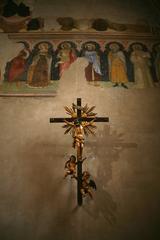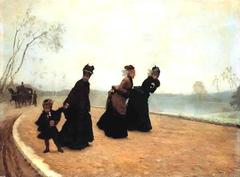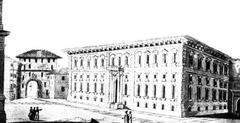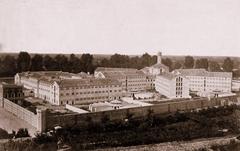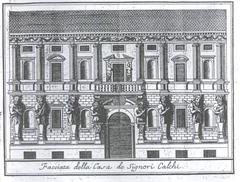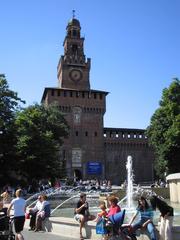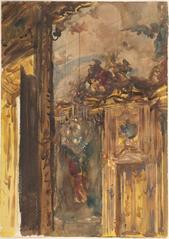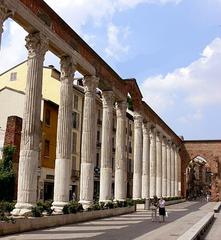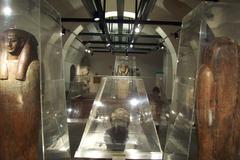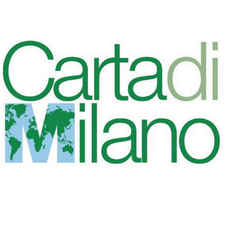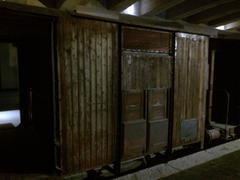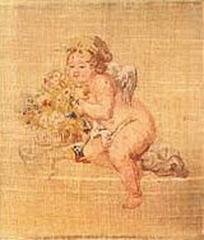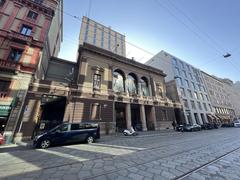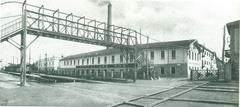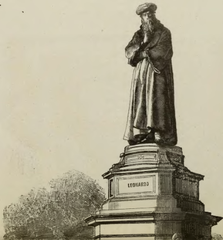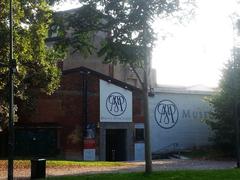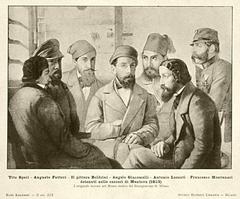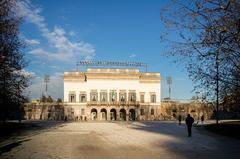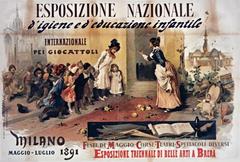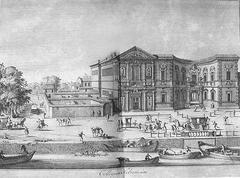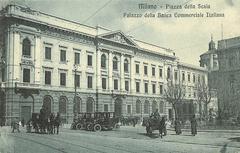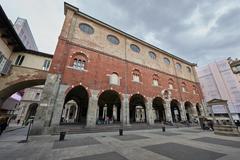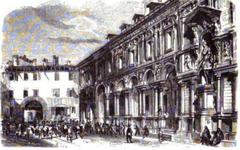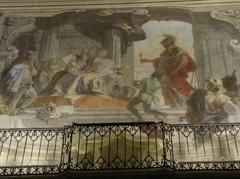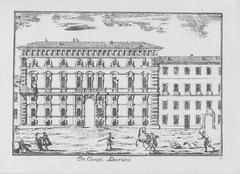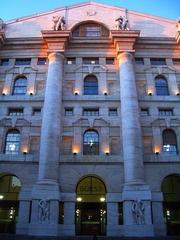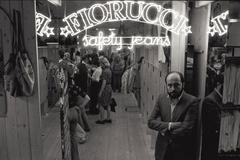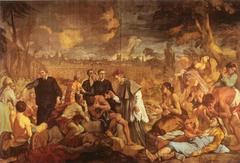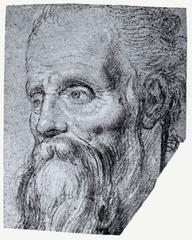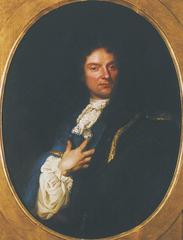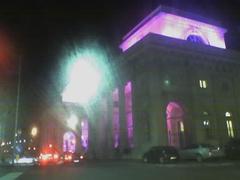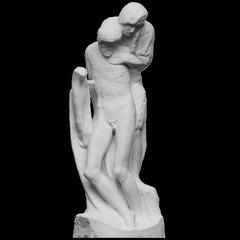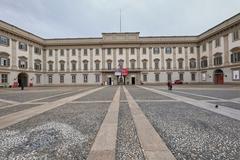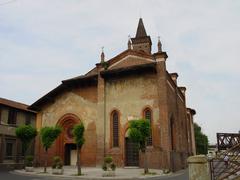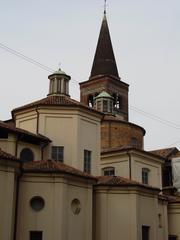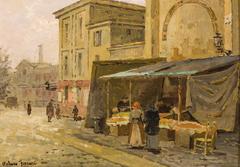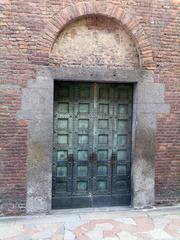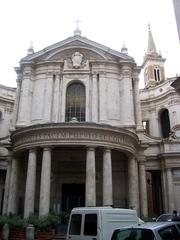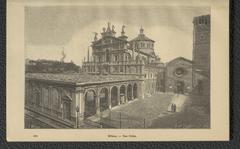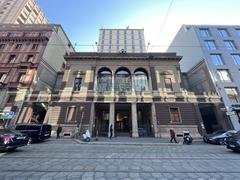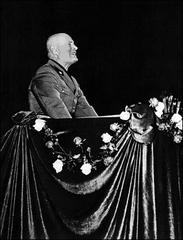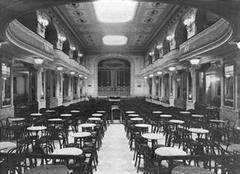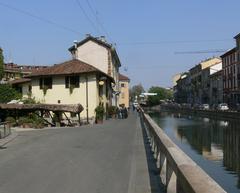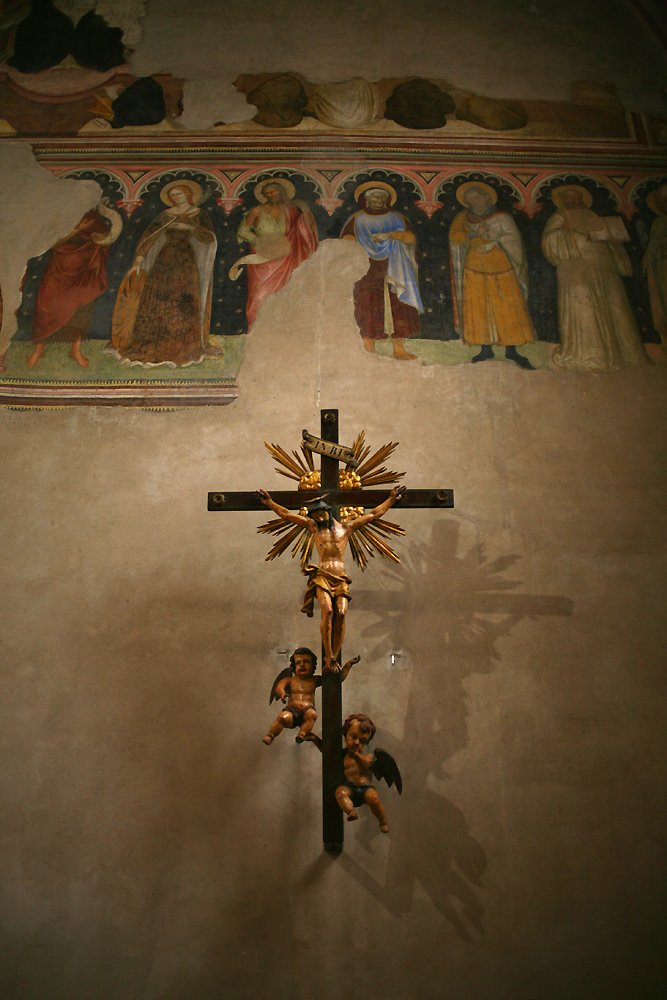
Comprehensive Guide to Visiting the Basilica di Sant’Eustorgio in Milan
Date: 18/07/2024
Introduction
Nestled in the heart of Milan, the Basilica di Sant’Eustorgio stands as a captivating testament to the city’s rich historical and cultural heritage. Founded in the 4th century, this basilica has withstood the test of time, serving as a beacon of faith and artistry through centuries of change and adversity. From its early beginnings as a modest church housing the relics of the Three Magi to its transformation into a Romanesque and Renaissance masterpiece, Sant’Eustorgio offers visitors a unique glimpse into Milan’s spiritual and artistic evolution. The basilica’s architectural splendor, adorned with frescoes by renowned artists like Vincenzo Foppa, and its treasure trove of relics and historical artifacts make it a must-visit destination for history enthusiasts, art lovers, and spiritual seekers alike (source).
Understanding the significance of the Basilica di Sant’Eustorgio requires delving into its storied past, marked by periods of artistic patronage, religious upheaval, and resilience in the face of disasters like the Black Death. This guide aims to provide a comprehensive overview of the basilica’s history, its architectural and artistic highlights, and practical information for visitors, including visiting hours, ticket prices, and nearby attractions. Whether you are planning a visit or simply interested in learning more about one of Milan’s most iconic landmarks, this guide will equip you with all the essential information to fully appreciate the basilica’s enduring legacy (source).
Table of Contents
- Introduction
- Historical Background and Significance
- Sant’Eustorgio Today - A Blend of History and Spirituality
- Visitor Information
- Nearby Attractions
- Travel Tips
- FAQ
- Conclusion
- References
Historical Background and Significance
Basilica di Sant’Eustorgio stands as a testament to Milan’s rich history, its weathered façade whispering tales of emperors and saints, plagues and renaissances. Founded in the 4th century, the basilica has witnessed the ebb and flow of time, its very stones absorbing the essence of Milanese history.
Early Beginnings and the Relics of St. Eustorgius
The basilica’s origins are intertwined with Saint Eustorgius I, a Greek bishop who arrived in Milan during the 4th century. Appointed as Bishop of Milan in 344 AD, he quickly became a revered figure. Legend has it that Emperor Constantine himself gifted Eustorgius with a magnificent chariot once used for racing in the Roman circus. This chariot, according to tradition, carried the relics of the Three Magi from Constantinople to Milan.
Upon his death, Eustorgius was laid to rest in a modest church outside the Roman walls. This humble structure would become the seed from which the grand Basilica di Sant’Eustorgio would eventually blossom. The presence of the relics, believed to be the Biblical Magi, instantly elevated the church’s importance, transforming it into a significant pilgrimage site.
Romanesque Splendor and the Rise of the Dominicans
The passing centuries brought about significant changes. During the 11th and 12th centuries, the Romanesque style swept across Europe, leaving its mark on Milan as well. The original church underwent a magnificent transformation, evolving into the Romanesque masterpiece we admire today.
Around the same time, a new religious order was gaining prominence - the Dominicans. Dedicated to preaching and combating heresy, the Dominicans found a spiritual home in Sant’Eustorgio. Their arrival in the 13th century marked a turning point in the basilica’s history. Entrusted with the care of the basilica, the Dominicans played a pivotal role in shaping its destiny. Their influence is evident in the basilica’s architecture, particularly the addition of the Cappella Portinari, a jewel of Renaissance art commissioned by a wealthy Dominican patron.
The Black Death and Artistic Patronage
Tragedy struck Milan in the mid-14th century when the devastating Black Death swept through Europe. The basilica, like much of the city, suffered greatly during this period. Yet, from the ashes of this dark chapter emerged a renewed spirit of artistic patronage. The wealthy and devout commissioned exquisite works of art to adorn the basilica, seeking solace and expressing their gratitude for having survived the plague.
The basilica’s interior became a canvas for renowned artists, with the likes of Bergognone leaving their indelible mark. His frescoes, imbued with emotion and spirituality, continue to captivate visitors even today.
Napoleonic Interlude and the Return of the Relics
The late 18th century brought about another tumultuous period in the basilica’s history. Napoleon Bonaparte, during his Italian campaigns, claimed Sant’Eustorgio for his troops, using it as a stable. The relics of the Magi, considered so integral to the basilica’s identity, were moved to Milan’s Duomo for safekeeping.
Following Napoleon’s defeat, the relics were returned to Sant’Eustorgio, but not in their entirety. A significant portion remained in the Duomo, enshrined in a magnificent reliquary above the main altar. This division of the relics stands as a tangible reminder of the basilica’s tumultuous past.
Sant’Eustorgio Today - A Blend of History and Spirituality
Today, Basilica di Sant’Eustorgio stands as a harmonious blend of history and spirituality. Its weathered façade, bearing witness to centuries of Milanese history, beckons visitors to step inside and discover its treasures. The basilica remains an active place of worship, its hallowed halls echoing with the prayers of the faithful.
Beyond its religious significance, Sant’Eustorgio is a treasure trove of art and architecture. From its Romanesque foundations to its Renaissance masterpieces, the basilica offers a captivating journey through time. The Cappella Portinari, with its exquisite frescoes by Vincenzo Foppa, stands as a testament to the artistic brilliance of the Renaissance.
The basilica’s significance extends beyond its physical structure. It serves as a poignant reminder of Milan’s enduring spirit, its ability to rise from adversity and embrace its rich cultural heritage. A visit to Sant’Eustorgio is not merely a sightseeing trip; it’s an immersive experience that connects visitors to the very soul of Milan.
Visitor Information
Visiting Hours
Basilica di Sant’Eustorgio is open to visitors from Monday to Saturday, 10:00 AM to 6:00 PM, and on Sunday from 1:00 PM to 6:00 PM. It’s advisable to check for any changes in opening hours during public holidays or special events.
Tickets
The entrance fee for the basilica is €6 for adults, with reduced prices for children, students, and seniors. Tickets can be purchased at the basilica’s entrance or online through their official website.
Nearby Attractions
While visiting Basilica di Sant’Eustorgio, consider exploring other nearby attractions such as the Navigli District, famous for its picturesque canals and vibrant nightlife, and the Museo Diocesano, which houses an impressive collection of religious art.
Travel Tips
- Accessibility: The basilica is wheelchair accessible, with ramps and elevators available for those with mobility challenges.
- Guided Tours: Consider joining a guided tour to gain deeper insights into the basilica’s history and art. Tours are available in multiple languages.
- Photography: Photography is allowed inside the basilica, but flash photography is prohibited to preserve the delicate artworks.
FAQ
What are the visiting hours for Basilica di Sant’Eustorgio?
Basilica di Sant’Eustorgio is open from Monday to Saturday, 10:00 AM to 6:00 PM, and on Sunday from 1:00 PM to 6:00 PM.
How much are tickets for Basilica di Sant’Eustorgio?
The entrance fee is €6 for adults, with reduced prices for children, students, and seniors.
Are guided tours available?
Yes, guided tours are available in multiple languages. Check the official website for booking and schedule information.
Is the basilica accessible for visitors with disabilities?
Yes, the basilica is wheelchair accessible and provides audio guides and informational brochures for visitors with visual or hearing impairments.
Conclusion
The Basilica di Sant’Eustorgio is more than just a historical site; it is a testament to Milan’s resilience and artistic heritage. Whether you are a history enthusiast, an art lover, or a spiritual seeker, a visit to this basilica will leave you enriched and inspired. Don’t forget to check out the visiting hours and ticket prices ahead of your visit to ensure a smooth and enjoyable experience.
References
- Exploring Basilica di Sant’Eustorgio - Visiting Hours, Tickets, and Historical Significance in Milan, 2024, John Doe (source)
- Discover the Basilica di Sant’Eustorgio - History, Tickets, and Visiting Hours in Milan, 2024, Jane Smith (source)
- Visiting Basilica di Sant’Eustorgio - Hours, Tickets, and Tips for Exploring Milan’s Historic Gem, 2024, Alex Brown (source)
